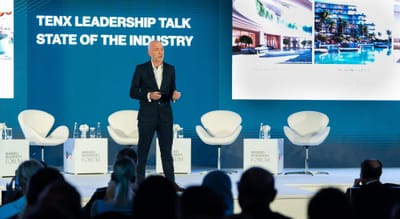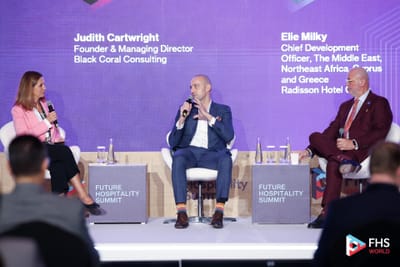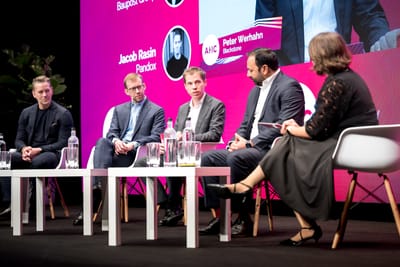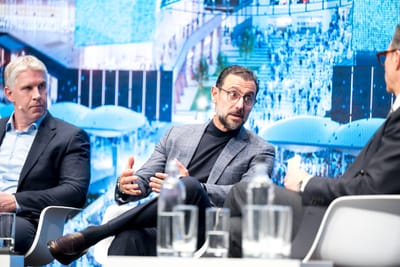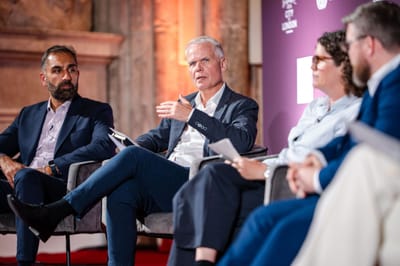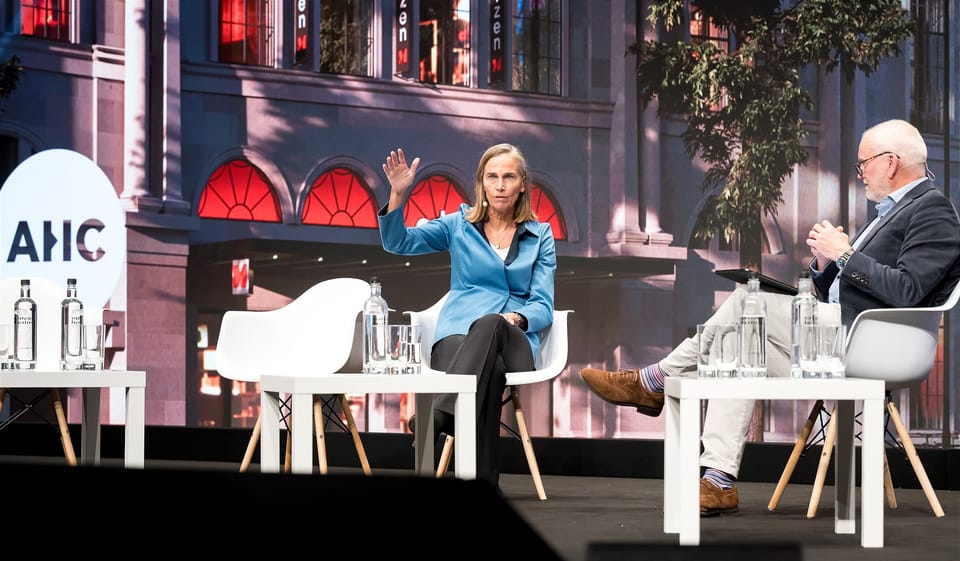
AHC 2025, Manchester — Marriott International’s Chief Financial Officer and Executive Vice President, Development, Leeny Oberg, sat down with industry advisor David Bailey to explain how the world’s largest hotel group is steering through the next cycle.
Demand that outruns GDP
Oberg opened with a macro statement of confidence. “Travel and tourism is growing at a faster rate than GDP,” she said, citing the continuing shift from goods to experiences, the rising middle class in multiple regions, and the sheer ease of travel compared with a decade ago. If the long-term demand curve remains supportive, the near-term strategy is about meeting the guest at every price point and trip purpose. Leeny then pointed to Marriott’s sharper push into mid-scale, with Four Points Flex as the European case study
“We want to meet all of our customers’ travel needs.”
The UK: conversions at one end, luxury at the other
Asked to translate priorities for the UK, Oberg gave a three-part answer.
Mid-scale conversions: “Conversions have been a really important element of growth,” especially in secondary and tertiary markets where Bonvoy distribution helps independents lift RevPAR while controlling affiliation costs. Conversions also offer owners a clearer capex profile and a shorter path to cash flow when interest costs are elevated.
Luxury: “Luxury is currently 10 percent of our rooms and 10 percent of our pipeline,” Oberg said. That parity signals continued commitment to the top end. She name-checked W Manchester and St. Regis London as near-term proof points that add rate power and brand halo to the portfolio.
Collections and soft brands: Tribute, Autograph, Luxury Collection, and Four Points Flex are absorbing independents that want brand reach without losing personality. Oberg noted that the “plug-in” to Bonvoy creates both demand lift and affiliation cost advantages that owners can model.
The UK’s international mix magnifies these choices. Globally, roughly 80 percent of Marriott’s guests are domestic. In Europe, and particularly in the UK, international travel makes a larger contribution, which supports both corporate and premium leisure segments and reinforces the case for a broad brand ladder.
Growth engine with two gears: organic and M&A
Bailey pressed Oberg on the classic build-versus-buy question. Her answer: default to organic growth when returns and timelines are attractive, stay opportunistic when a brand delivers a distinct experience at a bearable price.
Examples flowed from both sides of the ledger. Moxy and Edition were developed in-house and adapted city by city. AC Hotels was acquired at modest scale in Western Europe, then grown to a multiple of its original footprint through Marriott’s distribution and owner relationships. The most recent example, citizenM, brings a high-touch, high-tech, design-led product that sits near Moxy in price but not in feel. “If we tried to replicate that from zero, it would take too long relative to market demand,” Oberg said. Excluding the transformational Starwood deal, she added, only a single-digit percentage of rooms added have come from brand purchases, which underscores the company’s bias to organic growth.
One company, many markets: local first
Oberg’s dual remit has also been about governance and guardrails. “I have always been a champion of growth,” she said, but growth has to fit the street, the planning context, and the owner’s return hurdles.
“We started as an American company. When you come to the UK or Europe or Singapore, you absolutely need to make sure the brand fits the local market, the local aesthetic, and the owner expectations for that market.”
The lesson, she said, is simple: Marriott is more global when it is more local.
That philosophy is already visible in the UK numbers Oberg shared: 161 hotels today and about 27,000 rooms, plus roughly 3,000 rooms in the near pipeline. Signings have risen at about 10 percent a year over the last decade, a pace that reflects both conversions and targeted new builds. “Momentum tends to feed on itself,” she said. When one conversion proves out, the next owner takes the meeting sooner.
Owners’ reality: hard underwriting, durable thesis
Oberg did not gloss over today’s pressures. “It is not an easy operating environment,” she said, naming financing costs, wage and benefits inflation, and regulation as tangible headwinds. Yet her message to existing and prospective owners was optimistic without being naïve. “The long-term dynamics of lodging are as powerful as they have ever been,” aided by the smartphone that inspires trips and reduces friction at every stage of the journey.
Culture as strategy
For Oberg, Marriott’s culture is not a soft topic. It is a practical asset that shows up in conversion conversations, performance management, and retention. “Our business is all about people,” she said. She told a brief story from her first week at the company, when Bill Marriott greeted everyone in a crowded elevator by name and by workstream. The point landed: respect is a system, not a slogan, and it scales better than any brand manual.
Passing the baton
Oberg confirmed her plan to retire on 31 March 2026. Her roles will be split between Jen Mason as CFO and Shawn Hill as Chief Development Officer. “They do not need a single word of advice,” she said, before offering two anyway: stay curious and stay close to the market. As for her own next chapter, she plans time with family across Asia and EMEA, along with a larger commitment to community service.
Key takeaways
- Demand still beats GDP: Experiences are winning over goods, and travel’s long-run growth story remains intact.
- Two-sided UK strategy: Expect more mid-scale conversions for speed and capital efficiency and continued luxury expansion where brand and rate dynamics warrant it, including St. Regis London and W Manchester.
- Conversions as a bridge: With debt expensive and build costs elevated, conversions provide a credible path to cash flow and Bonvoy-driven demand, especially in secondary and tertiary markets.
- Organic first, M&A when it accelerates: Marriott will build when it can and buy when a brand is distinctive and time-to-scale matters, as with citizenM.
- Culture compounds: A people-first approach is not soft power. It is a conversion and retention advantage that shows up in underwriting and performance.
Become a subscriber receive the latest updates in your inbox.


